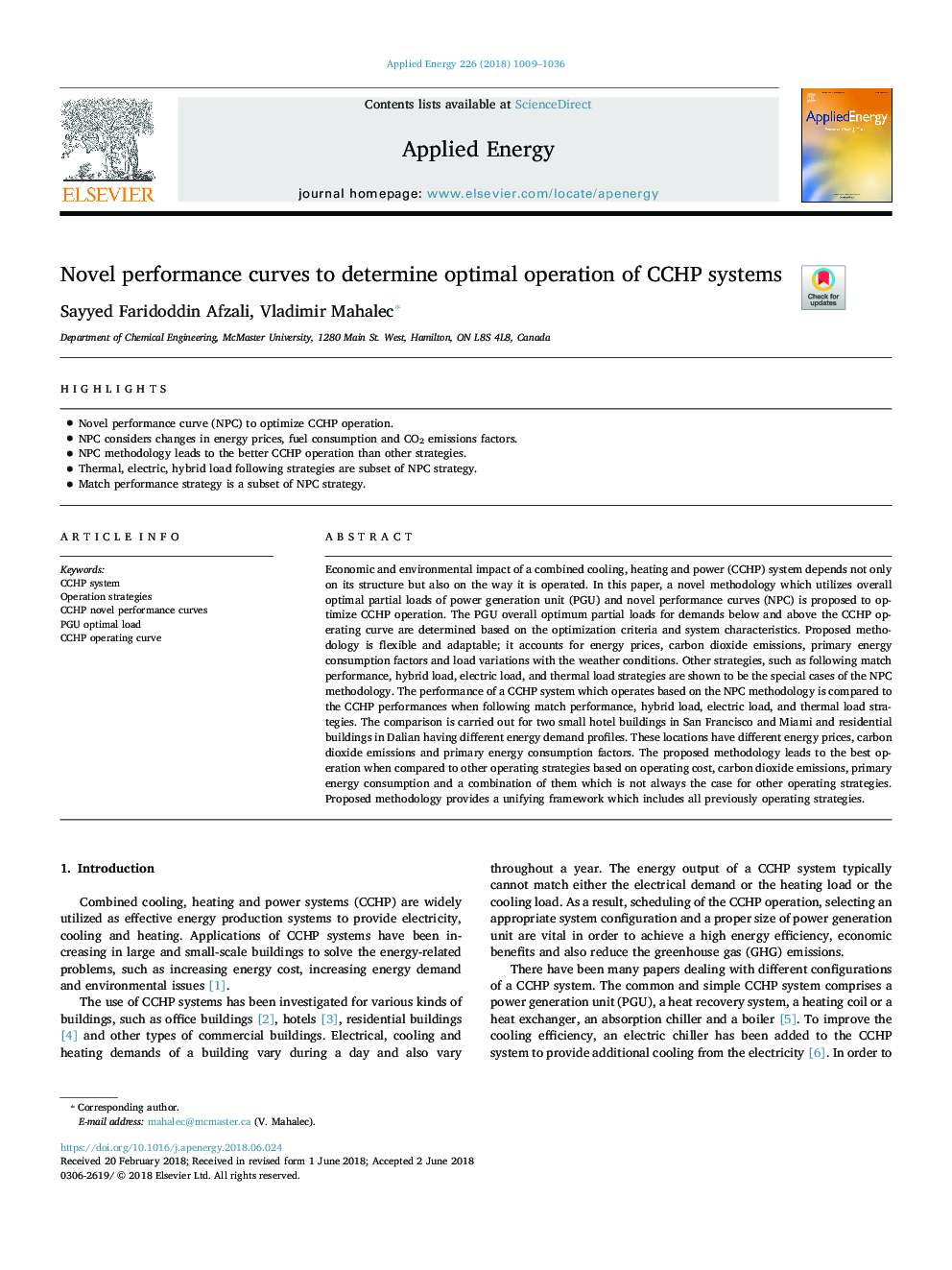| Article ID | Journal | Published Year | Pages | File Type |
|---|---|---|---|---|
| 6679821 | Applied Energy | 2018 | 28 Pages |
Abstract
Economic and environmental impact of a combined cooling, heating and power (CCHP) system depends not only on its structure but also on the way it is operated. In this paper, a novel methodology which utilizes overall optimal partial loads of power generation unit (PGU) and novel performance curves (NPC) is proposed to optimize CCHP operation. The PGU overall optimum partial loads for demands below and above the CCHP operating curve are determined based on the optimization criteria and system characteristics. Proposed methodology is flexible and adaptable; it accounts for energy prices, carbon dioxide emissions, primary energy consumption factors and load variations with the weather conditions. Other strategies, such as following match performance, hybrid load, electric load, and thermal load strategies are shown to be the special cases of the NPC methodology. The performance of a CCHP system which operates based on the NPC methodology is compared to the CCHP performances when following match performance, hybrid load, electric load, and thermal load strategies. The comparison is carried out for two small hotel buildings in San Francisco and Miami and residential buildings in Dalian having different energy demand profiles. These locations have different energy prices, carbon dioxide emissions and primary energy consumption factors. The proposed methodology leads to the best operation when compared to other operating strategies based on operating cost, carbon dioxide emissions, primary energy consumption and a combination of them which is not always the case for other operating strategies. Proposed methodology provides a unifying framework which includes all previously operating strategies.
Keywords
Related Topics
Physical Sciences and Engineering
Energy
Energy Engineering and Power Technology
Authors
Sayyed Faridoddin Afzali, Vladimir Mahalec,
